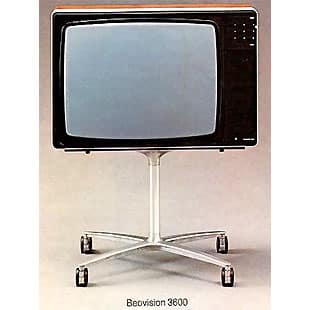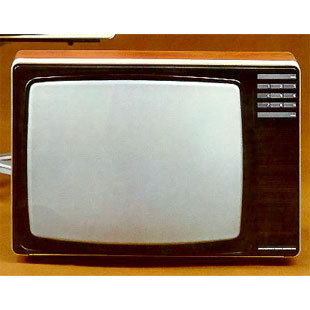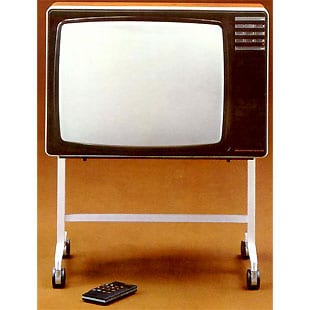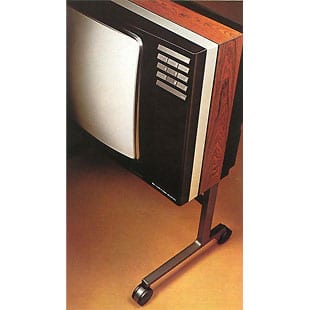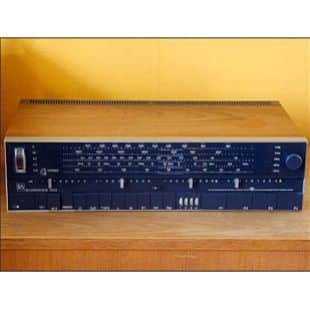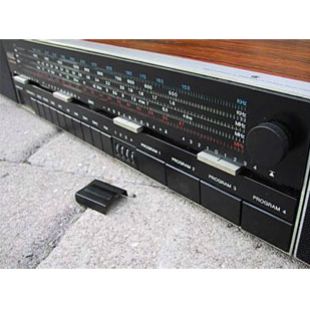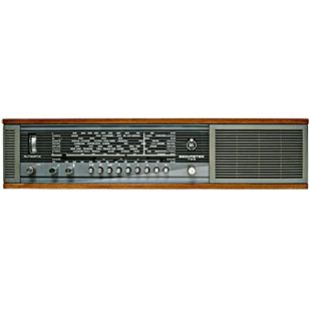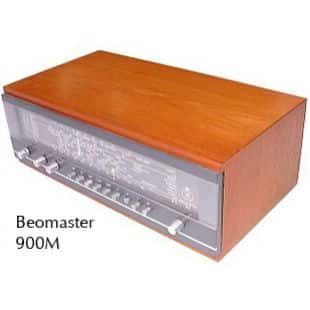BeoVision 3500
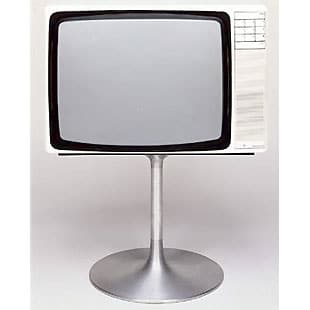
Beovision 3500 type number: 3907 was a 56cm colour television designed by David Lewis and Henning Moldenhawer. It could be placed on two types of stand – the trumpet stand (shown above) and the cross foot stand.
By 1975, colour television had become commonplace in homes throughout Western Europe. And a lot of those homes were furnished in white – the ‘in’ colour of the 1970s. Television, as a lot of home furnishings, followed this trend and Beovision 3500, with its trumpet base and cross-base on wheels, reflected what was happening in the world of interior design. The cabinet was made of moulded plastic and its appearance was markedly different from most other televisions of the era.
Beovision 3500 was Bang & Olufsen’s first fully transistorised television; this meant that very little warm up time was necessary for picture and sound. The choice of television channels had increased considerably over the previous years and the controls were adapted accordingly. “In everyday use, you select your TV programmes using the easy-touch push buttons at the top. Each of these can be set to one TV channel; this is done once only using the scaled potentiometer dials. These eight dials are only visible when the panel is opened; this is where you or your dealer can set the VHF and UHF channels that you are able to receive. Beovision 3500 has automatic frequency control, AFC, which locks the TV stations once they have been selected.” said the sales literature in 1975.
With Beovision 3500 it was clear that an icon had been created. The cabinet was made of moulded plastic and its appearance was markedly different from most other televisions of the time. However, the wooden cabinet was retained in the similarly-styled Beovision 3600 model. From 1975, Bang & Olufsen was also able to equip all its televisions with Automatic Cut-off Control.
An invention by the young engineer Erik Albert Jensen made waves internationally in the television sector. Cut-off Control ensures that the colour balance is maintained throughout the service life of the television. No fewer than 50 times each second the three electron beams are measured and corrected independently, thus avoiding any annoying deviations in colour.
(Taken from Beolink Magazine: ‘The First 50 Years of Television’ © Bang & Olufsen a/s 2002)

